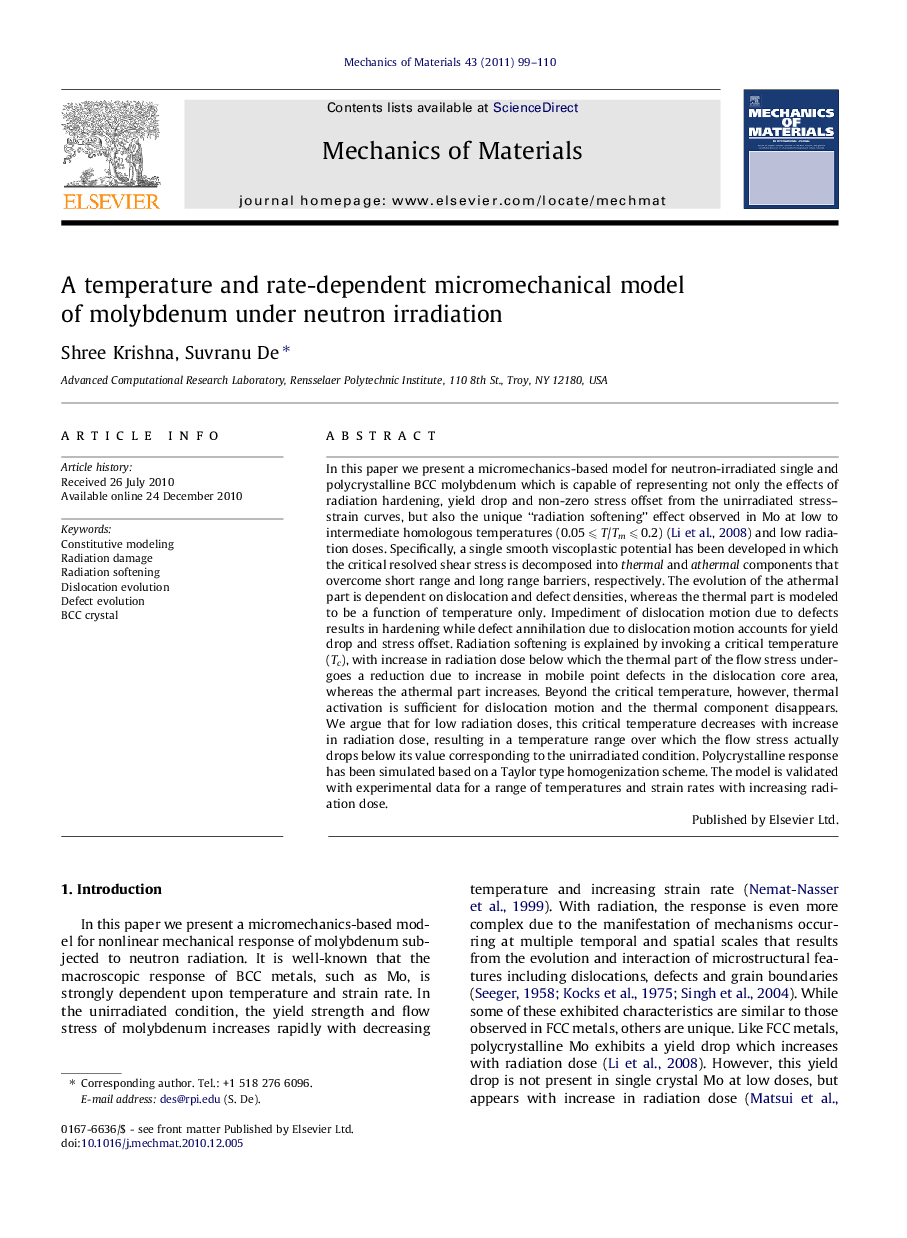| کد مقاله | کد نشریه | سال انتشار | مقاله انگلیسی | نسخه تمام متن |
|---|---|---|---|---|
| 800807 | 1467508 | 2011 | 12 صفحه PDF | دانلود رایگان |

In this paper we present a micromechanics-based model for neutron-irradiated single and polycrystalline BCC molybdenum which is capable of representing not only the effects of radiation hardening, yield drop and non-zero stress offset from the unirradiated stress–strain curves, but also the unique “radiation softening” effect observed in Mo at low to intermediate homologous temperatures (0.05 ⩽ T/Tm ⩽ 0.2) (Li et al., 2008) and low radiation doses. Specifically, a single smooth viscoplastic potential has been developed in which the critical resolved shear stress is decomposed into thermal and athermal components that overcome short range and long range barriers, respectively. The evolution of the athermal part is dependent on dislocation and defect densities, whereas the thermal part is modeled to be a function of temperature only. Impediment of dislocation motion due to defects results in hardening while defect annihilation due to dislocation motion accounts for yield drop and stress offset. Radiation softening is explained by invoking a critical temperature (Tc), with increase in radiation dose below which the thermal part of the flow stress undergoes a reduction due to increase in mobile point defects in the dislocation core area, whereas the athermal part increases. Beyond the critical temperature, however, thermal activation is sufficient for dislocation motion and the thermal component disappears. We argue that for low radiation doses, this critical temperature decreases with increase in radiation dose, resulting in a temperature range over which the flow stress actually drops below its value corresponding to the unirradiated condition. Polycrystalline response has been simulated based on a Taylor type homogenization scheme. The model is validated with experimental data for a range of temperatures and strain rates with increasing radiation dose.
Journal: Mechanics of Materials - Volume 43, Issue 2, February 2011, Pages 99–110